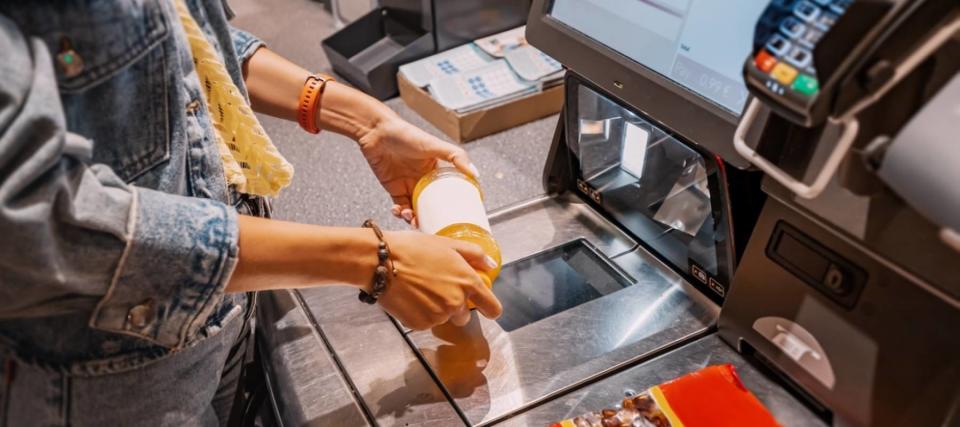'It's more than fatigue': 30% of Americans say tipping in the US is 'out of control' — even self-checkout machines now ask for tips. Do you agree?
It’s beyond just showing appreciation for your Starbucks barista and Uber Eats driver — tipping prompts have even spread to self-checkout machines, and frustrated Americans are ticked off.About 2-in-3 adults have a negative view of tipping, according to a recent Bankrate survey.While 41% believe businesses should pay employees better instead of relying so heavily on tips, 32% are annoyed about pre-entered tip screens and 30% feel that tipping culture has gotten out of control.“It’s more than fatigue, it’s irritation,” Michael Lynn, a professor of consumer behavior and marketing at the Cornell University School of Hotel Administration, told CNBC.“It’s not tip creep, it’s tip gallop.”Consumers are starting to tip lessDespite the recent escalation in tipping prompts, it appears the frequency of tipping in the U.S. has been trending downward since 2019.For example, dining at a sit-down restaurant is still the most common service for Americans to leave tips, but according to Bankrate data,

It’s beyond just showing appreciation for your Starbucks barista and Uber Eats driver — tipping prompts have even spread to self-checkout machines, and frustrated Americans are ticked off.
About 2-in-3 adults have a negative view of tipping, according to a recent Bankrate survey.
While 41% believe businesses should pay employees better instead of relying so heavily on tips, 32% are annoyed about pre-entered tip screens and 30% feel that tipping culture has gotten out of control.
“It’s more than fatigue, it’s irritation,” Michael Lynn, a professor of consumer behavior and marketing at the Cornell University School of Hotel Administration, told CNBC.
“It’s not tip creep, it’s tip gallop.”
Consumers are starting to tip less
Despite the recent escalation in tipping prompts, it appears the frequency of tipping in the U.S. has been trending downward since 2019.
For example, dining at a sit-down restaurant is still the most common service for Americans to leave tips, but according to Bankrate data, 73% of U.S. adults who dine at sit-down restaurants always tipped in 2022 — compared to 75% in 2021 and 77% in 2019. Tipping has also slowed down in other businesses, like salons, cafes and food delivery services.
And the practice can vary based on demographic. Women are significantly more likely to tip than men, and Gen Z is the least likely to tip compared to older generations.
While 16% of U.S. adults say they’re willing to pay higher prices if American culture could do away with tipping, 15% reported being confused about who and how much to tip.
That said, nearly half of Americans still tip at least 20% at sit-down restaurants — which etiquette experts say is standard practice.
What’s triggering the fatigue?
As tipped workers generally receive a federal minimum wage of $2.13 per hour — a rate that was set back in 1996 — they rely mainly on tips to make ends meet. However, researchers now worry that companies are using tips as a way to pass the buck of ensuring employees receive fair wages to consumers. About 40% of respondents in the Bankrate survey agree employers should pay their workers better instead.
But while American consumers have long understood tipping is customary at a sit-down restaurant, many feel frustrated by the sudden appearance of tip prompts in unexpected places. The Wall Street Journal reports prompts for adding 20% at self-checkout machines are popping up across the country — despite customers getting little to no interaction with actual humans.


Although some companies told the publication the extra dollars get distributed among employees, researchers also pointed out that there’s no way to be sure these tips always reach workers since the Fair Labor Standards Act doesn’t extend to machines.
The slow downswing in paying gratuity on services can’t be blamed entirely on “tip creep,” however.
Inflation may be receding, but it’s still well above the Fed’s 2% target, meaning interest rates remain high and wages just aren’t keeping up. That’s left countless American families living paycheck to paycheck with considerably less disposable income to spare.
The increase in negative sentiment has even induced a few business owners to reduce the suggested tip amounts or forgo the option on checkout screens entirely.
“It’s a fascinating issue with few clear answers,” Bankrate senior industry analyst Ted Rossman said in the press release. “There is one apparent certainty, though: Tipping doesn’t seem likely to leave American society anytime soon.”
This article provides information only and should not be construed as advice. It is provided without warranty of any kind.
What's Your Reaction?













